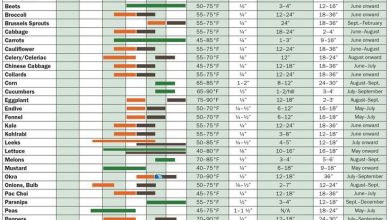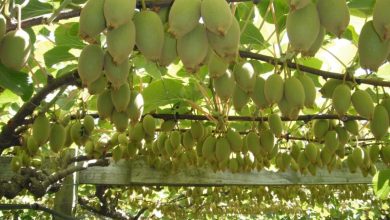Bella Sombra: [Cultivation, Irrigation, Care, Pests and Diseases]
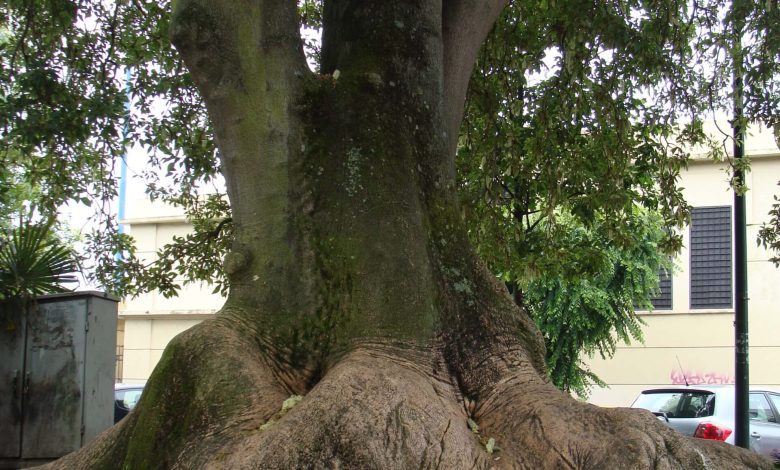
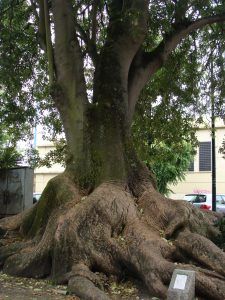 Bella Sombra, is a tree native to the hot and humid region of Argentina. However, it has been introduced to various countries such as Spain, France, Algeria, the United States, among others.
Bella Sombra, is a tree native to the hot and humid region of Argentina. However, it has been introduced to various countries such as Spain, France, Algeria, the United States, among others.
The Phytolacca dioica is characterized by having a thick base, similar to a pedestal, which grows even larger in adult specimens. In Europe, this tree is known as beautiful shade due to the thick shade it casts and offers shelter from the weather.
This tree is frequently used as an ornamental species. However, it is also used to relieve headaches, promote healing, clean and heal wounds, as well as an antirheumatic, mainly.
The name ombú derives from the Guarani imboú which means tree that attracts rain. This name refers to an ancient legend in which a woman, named Ïmboú, watered the last corn plant with her tears to feed her family.
Important points when planting beautiful shade:
- Scientific name: Phytolacca dioica.
- Common name: Fitolaca, ombú, bellasombra, tree of the beautiful shade.
- Height: 8 to 12 meters.
- Light requirement: Direct light and partial shade.
- Temperature: Warm climates (12ºC to 32ºC).
- Irrigation: Moderate.
- Fertilizer: Organic fertilizer.
What characteristics does the beautiful shade tree have?
The beautiful shade tree is of the deciduous type. It reaches a height between 8 and 12 meters, sometimes reaching 15 meters. Its glass is dense and rounded.
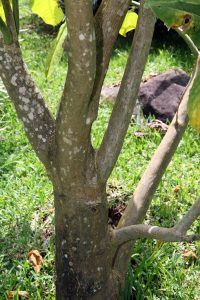 The trunk of the also called ombú is short, unitary or multiple, made of soft and porous wood, since it does not develop rings of bark. It has a grayish green color. This widens at the base forming a wide pedestal together with the roots.
The trunk of the also called ombú is short, unitary or multiple, made of soft and porous wood, since it does not develop rings of bark. It has a grayish green color. This widens at the base forming a wide pedestal together with the roots.
Its leaves are alternate, simple, smooth, oval in shape. They are dark green in color and can measure up to 15 centimeters in length. These fall during the winter but sprout again during the beginning of spring.
The beautiful shade has small dioecious flowers, yellowish white, without petals. These are grouped in inflorescences that can measure 5 to 8 centimeters long and bloom during the summer.
The fruits are yellowish-green berries at first, but during the fall they ripen and change to a blackish color. Inside they contain ovoid-shaped black seeds, which can measure up to 3 millimeters in length.
When to sow beautiful shade?
It is advisable to sow the beautiful shade tree through seeds during the fall or spring. On the other hand, if you want to grow it by cutting, it should be done in late spring and early summer.
Where to plant beautiful shade?
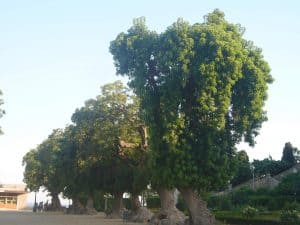 The beautiful shade tree prefers mild and warm climates, with temperatures that are within the range of 18ºC to 32ºC, and not lower than -5ºC.
The beautiful shade tree prefers mild and warm climates, with temperatures that are within the range of 18ºC to 32ºC, and not lower than -5ºC.
It is generally grown in places where it is fully exposed to direct sunlight, although it can also be established in semi-shade.
The roots of the beautiful shade are powerful, for this reason it should be located in wide places where they can expand freely and without causing damage to any nearby structure.
How to prepare the land?
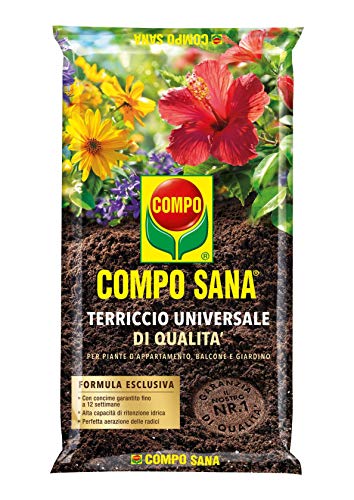
The beautiful shadow can be planted in light, medium and heavy soils. However, it develops better in fertile soils, with good moisture retention. In case of planting it in a pot, it is recommended to make a mixture of universal substrate at 70%, with perlite, at 30%.
On the other hand, if you want to plant it in the soil, it can be enriched by adding organic matter, which will also favor the drainage capacity of the substrate.
How do we water the beautiful shade tree?
The beautiful shade tree does not need much water. In fact, it is drought tolerant since its bark tissues allow it to store large amounts of water. However, it develops better in moist soils.
Due to the above, irrigation must be applied manually until the soil is dry in the superficial layer; in this way waterlogging and root rot will be avoided.
How often do we water the beautiful shade?
How often to water the beautiful shade tree will depend on location and weather. However, it is recommended to apply moderate watering 2 times a week during the warmer months and reduce it the other months of the year.
How to plant a beautiful shade tree step by step?
The beautiful shade tree is propagated by seeds and vegetative cuttings. Below are the instructions to sow as the case may be.
by seed
- Place the seeds 3 millimeters deep in a container or seedbed with organic substrate.
- Locate the seedbed indoors, away from direct sunlight, at a temperature of 20ºC and maintain constant humidity by spraying water with an atomizer.
- After 4 to 8 weeks, move the seedbed to a brighter spot. If possible, in direct sunlight and the protection of a mesh.
- Transplant into individual pots as soon as a couple of true leaves have sprouted and let them grow until their first winter is over.
- Transplant back to its final place after the last frost. This is usually in late spring.
by division
- From a mature tree, cut a section 15 centimeters long with a sharp, clean, sterilized instrument.
- Apply rooting hormones to the edge of the base to encourage root growth.
- Plant the cutting in a pot with organic substrate and sand at a 1:1 ratio. Place the pot in a lighted place and water frequently to keep the substrate moist.
- Transplant as soon as the shoots appear, progressively change to more illuminated sites.
- Plant in its final place during the spring.
What care does the beautiful shade tree need?
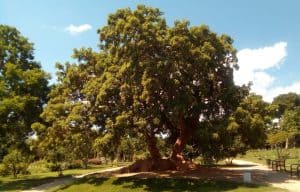 It is not very demanding. It must be careful of low temperatures during its early stages of growth as it could be damaged.
It is not very demanding. It must be careful of low temperatures during its early stages of growth as it could be damaged.
Similarly, it can be fertilized with a little organic fertilizer, or with organic matter such as manure, during spring and summer.
What pests and diseases affect the beautiful shadow?
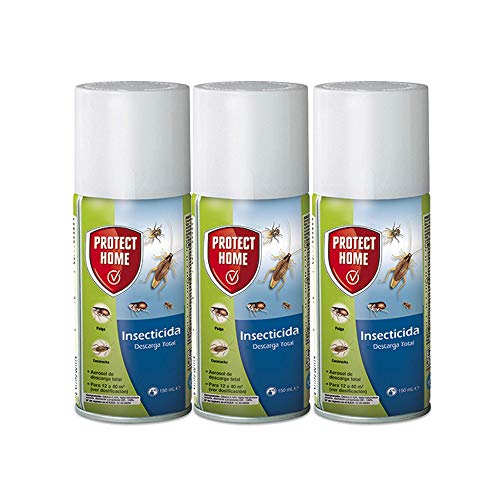
The beautiful shade tree is immune to insects and other pests because its sap is slightly toxic. However, the presence of mealybugs, red spider mite and mine worms has been reported.
How long does the beautiful shadow live?
It has an estimated life span of between 80 and 90 years.
How long does it take for the beautiful shade to grow?
It has a relatively fast growth rate, becoming an adult tree before the age of 15.
How long does it take to produce fruit?
After 5 years have elapsed since planting, the beautiful shade tree will already be able to give its first flowers.
Can it be grown in a pot?
Planting in pots is only recommended in cases where it is going to be used as a bush or as a bonsai.
Of the rest, it is necessary to transplant as soon as it reaches a meter in height, at most.
How many times does the beautiful shadow produce fruit?
Production is annual. That is, once a year the fruits will be seen.
Should the beautiful shade be pollinated to obtain fruit?
It is pollinated with the help of insects and some birds that are involved in this process.
How cold can the beautiful shade tolerate?
It has no problems with the relative winter cold. More with frost it does not do well. In fact, with temperatures below -5° C it will suffer.
How many beautiful shadows can be planted per hectare?
Due to its size, between 100 and 200 specimens per hectare are recommended.
What kind of fertilizer does the beautiful shade need?
Work will be done with organic matter during the hot seasons of the year. You don’t need to put too much effort into this task.
How much heat and/or drought can beautiful shade tolerate?
Withstands summer heat that is not very intense, up to a maximum of 35° C.
As for drought, there is no problem because its internal system stores enough water to withstand lack of irrigation for many days.
References
- http://www.jardibotanic.org/fotos/pdf/publicacion_2_82_LA-ARBOLEDA-MONUMENTAL-ESP.pdf
- http://biblioteca.digital.gob.cl/bitstream/handle/123456789/3567/Libro%20Arboles%20versión%20digital.pdf?sequence=1&isAllowed=y
- https://en.wikipedia.org/wiki/Phytolacca_dioica
- https://www.arbolesornamentales.es/Phytolaccadioica.htm
- http://exa.unne.edu.ar/biologia/diversidadv/documentos/ANGIOSPERMAS/Core%20Eudicotiled%F3neas%20Basales/Phytolaccaceae.pdf
- https://www.google.com/url?sa=t&rct=j&q=&esrc=s&source=web&cd=&cad=rja&uact=8&ved=2ahUKEwi_h-GsiNzvAhUPRa0KHdc1DeQQFjAAegQIBBAD&url=https%3A%2F%2Fwww.colibri.udelar.edu.uy% 2Fjspui%2Fbitstream%2F20.500.12008%2F19952%2F1%2FFV-29276.pdf&usg=AOvVaw3SpZxFVumtFeVaiyGVDgVK
- https://hablemosdeflores.com/ombu/
- http://tropical.theferns.info/viewtropical.php?id=Phytolacca+dioica
- https://www.biodiversidad.gob.mx/Difusion/cienciaCiudadana/aurbanos/ficha.php?item=Phytolacca%20dioica

![Photo of Complete Guide on How to Plant Quinoa: [Step by Step + Images]](https://www.complete-gardening.com/wp-content/uploads/2022/08/complete-guide-on-how-to-plant-quinoa-step-by-step-images-340x220.jpg)
